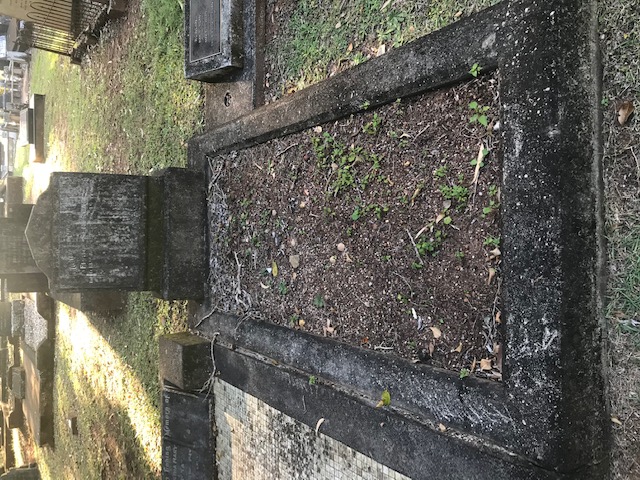Forums
This should be an easy one to resolve. I have read through the chapter in EE on cemetery records (best book I ever purchased for research - I love it!) and I think I am almost there for a citation for the following grave. The grave is in a rural area but it has a street address. Civilization in getting closer to the grave so it's almost semi-rural now I guess. The grave itself consists of a headstone and a raised concrete border surrounds the grave with crushed granite filling the grave. The headstone is of granite and engraved. The query after reading through examples in EE chapter 5 is exactly how to cite this as I see "marker" mentioned in examples but not "headstone". Here is my attempt at a full reference using EE methodology (the grave is my Great Grandfather's):
Woombye Cemetery, (Maroochy Shire, Queensland, Australia), Frank Senescall headstone and grave, old section top of hill, personally read & photographed (Charles Senescall); 26 April 2021.
Ok how did I go? There are no rows or plot markers in this old section of the grave. As I am putting this on Wikitree I thought I best add my actual name in the cite because although you manage a deceased's profile you don't own it and anyone can amend on Wikitree - thus my identity as the gatherer of the evidence may not be immediately obvious as it would be in a book or article. Is it too wordy? Also this cemetery actually has a street address these days: 154-172 Woombye-Palmwoods Road, Palmwoods Queensland 4555. Should this go in the citation as well?? In addition I have GPS co-ords for the cite: Lat: 26° 40' 52"S, Lon; 152° 58' 28"E. That seems like overkill to me but please advise if that goes in a full cite for this in your opinion. I am guessing because the cemetery these days has an actual street address GPS is unnecessary although I have it all in my research notes along with tombstone & grave condition/deterioration etc. as the grave is over 100 years old (1913). A picture of the grave site is attached to give an idea of what I'm talking about.

Phew! Thanks for any advice.
Charles_Sen, you've done…
Charles_Sen, you've done well. Re your question about terminology: as pointed out in EE 5.1, terminology varies from one region to another. Just use the term that applies in your region. EE would make only a couple of tweaks in your draft citation:
1. Woombye Cemetery (154-172 Woombye-Palmwoods Road, Palmwoods, Maroochy Shire, Queensland, Australia), Frank Senescall headstone and grave, old section top of hill, personally read & photographed by Charles Senescall, 26 April 2021.
In brief:
1. Remove the superfluous comma between cemetery and the opening parenthesis.
2. Add the address within the parentheses. Given that a street/road address has been assigned, GPS designations and other rural strategies are not needed.
3. Rather than put your name in parentheses, explicitly say that the reading and photograph was “by Charles Senescall.” That way, no one has to be uncertain what the name in parentheses refers to.
4. Delete the semicolon between your name and the date you viewed the stone. In citations, we use semicolons to separate major parts (or “layers”) of a complicated citation. There’s no logical reason to separate the ID of the person who viewed the stone from the date on which it was viewed.
P.S. Sorry about the delay…
P.S. Sorry about the delay in answering. I'm out of the office this week with limited access to the website.
Thanks again. As far as I am…
Thanks again. As far as I am concerned this was a very prompt response, especially considering the authoritative and detailed nature. Goo luck on the remainder of your adventures this week.
Thank you for your reply. It…
Thank you for your reply. It amazes me the amount of time I spent on this simple citation and I still managed errors – a humbling experience.
The pleasing aspect for me is your attached explanation enables me to see the key is an understanding of why things are done the way they are as mentioned many times in EE. Your post addresses that which makes it very valuable to me. Also, I can see that historical citations are a real art not just a robotic rule-based exercise (also explained in the book). It has now become clear I have so much more to learn to even become a novice with the citation of family history records.